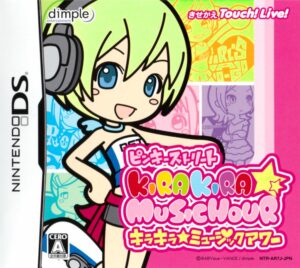Retro Replay Review
Gameplay
From the moment you regain consciousness strapped to a gurney, Dementium: The Ward wastes no time throwing you into a tense, claustrophobic experience. Controls are split between the DS’s buttons and touchscreen: the D-pad moves your character, face buttons handle aiming and firing, and the stylus can be used to switch weapons or access the inventory. While the control scheme takes a bit of getting used to—especially when frantically juggling guns, health items, and key cards—it ultimately allows for surprisingly precise shooting and quick weapon swaps once mastered.
As you press deeper into the abandoned corridors of the hospital, Dementium adheres closely to the survival horror formula. Ammunition is scarce, and each zombie encounter feels like a calculated risk rather than a disposable fight. You’ll find a modest arsenal—handgun, shotgun, and a handful of specialty weapons—but you’ll constantly weigh whether to conserve shells or press onward, praying the next safe room replenishes your supplies. Occasional puzzles involving levers, power switches, and locked doors break up the shooting segments, keeping exploration from growing stale.
Level design is deliberately linear, guiding you from one bloodstained hallway to the next, but environmental details reward slow, cautious play. Tight corners, flickering lights, and distant moans ratchet up tension, while dead ends and backtracking require careful note of your surroundings. Enemy variety is limited—zombies, crawling corpses, and the occasional boss creature—but the limited palette underscores the game’s relentless atmosphere. Dementium’s pacing rarely lets you rest, and you’ll find yourself constantly on edge, scanning every shadow for movement.
Graphics
For a DS title pushing 3D environments, Dementium delivers surprisingly robust visuals. Character models are blocky by modern standards, yet retain enough detail to convey decaying flesh, tattered clothing, and grotesque wounds. The game makes clever use of textures to simulate grime and rust—blood spatters stain the walls, and puddles of dark liquid reflect your flashlight’s beam in real time.
Lighting is the star of the show: dynamic shadows flicker with each step of your flashlight, and sudden electrical failures plunge you into near-total darkness. This interplay between light and shadow transforms the DS’s small screens into windows of dread. The top screen consistently renders enemies and environments in fine detail, while the bottom touchscreen handles your map and inventory without blocking your view. Frame rate dips occur when too many effects or creatures populate a scene, but these hiccups are rare and rarely disrupt the creeping dread.
Art direction leans heavily into classic horror motifs—rusty operating tables, broken wheelchairs, and graffiti-scrawled warnings all contribute to a sense of a once-functional hospital twisted into a madman’s playground. Special effects like blood splatters, muzzle flash, and low-res fog add an unexpected layer of polish. Though the hardware imposes limits, Dementium’s visuals punch far above their weight, creating a setting that feels alive…and deeply unsettling.
Story
Dementium opens with one of horror’s most disorienting premises: you awaken strapped to a gurney, a silent spectator to your own impending doom. Soon you break free, only to discover the hospital overrun by the undead. From there, the narrative unfolds through environmental cues—scribbled notes, flickering monitors, and occasional audio logs hint at sinister experiments and a tragic backstory.
Character development is minimal by design. You remain an anonymous protagonist, simultaneously curious and terrified. This blank-slate approach enhances immersion, letting you project your own fears onto the role. Cutscenes are brief and grayscale, emphasizing mood over exposition. Most storytelling is done on the fly: footsteps echoing down distant halls, bloodied messages scrawled on walls, and the occasional hallucination sequence that blurs reality with nightmare.
While the twists and reveals won’t upend the genre, Dementium’s narrative supports its gameplay superbly. You’ll find yourself piecing together the facility’s descent into chaos, wondering what happened to the staff and patients before you. The finale ties these threads together with a climactic confrontation and a reveal that—though not entirely original—feels earned after hours of creeping dread.
Overall Experience
Dementium: The Ward stands out on the DS as a rare successful translation of survival horror to handheld hardware. Its tension-filled gameplay loop, atmospheric graphics, and sparse but effective storytelling deliver a cohesive package that few portable games attempt. Despite occasional frame rate drops and the inevitable limitations of DS controls, the overall experience remains gripping from start to finish.
Sound design deserves special mention: echoing footsteps, distant moans, and sudden shrieks keep you constantly on edge. A minimalist score punctuates key moments, and the DS’s mono speaker surprisingly conveys enough bass rumble to amplify your fear. Combined with the game’s visuals, audio cements an oppressive atmosphere that lingers long after you close the lid.
For fans of classic survival horror seeking a portable fix, Dementium delivers more thrills than most console titles of its era. It won’t revolutionize the genre, but it proves that with clever design and a focus on mood, handheld horror can stand toe-to-toe with its home-console counterparts. If you’re prepared to navigate blood-soaked corridors with limited resources—and don’t mind a few rough edges—you’ll find Dementium: The Ward a haunting journey worth undertaking.
 Retro Replay Retro Replay gaming reviews, news, emulation, geek stuff and more!
Retro Replay Retro Replay gaming reviews, news, emulation, geek stuff and more!





Reviews
There are no reviews yet.